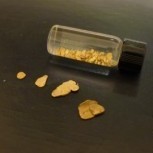Leaderboard
Popular Content
Showing content with the highest reputation on 08/05/2020 in all areas
-
Finished up both waterproof batteries this past week, and had the inline battery out in the water about 12 hours now with no issues. Both will cover my hunting needs for a while. Both batteries packs charge to 16.8 volts...the inline EBL batteries are 5000 mAh, the Samsung 35E 3500 x 2 = 7000 mAh......Stock battery will go into storage and saved only for warranty issues. Cost wise the inline is the best investment...A little more work charging..but lighter then the stock battery. The 8 cell battery has a longer run time, and much easier to charge..heavier then the stock battery ..the charger runs the price up on this setup...24 dollars plus 12.oo for the M-8 female fitting.. I may try and make a shorty 4 cell of this kind since I have the charger already. Runtime would be around 5 hours plus using 3500mAh batteries....3500 divided by 9.8 mAh = 357 +/- minutes runtime.7 points
-
Then you'll have 8 million prospectors swarming the gold fields and every last speck will be sucked up in 4 months. 😁4 points
-
Just stuff a GPX in a fully waterproof Equinox housing for under a grand and I’ll be fine.4 points
-
I suspect they were just selling out what was in the warehouse. I went over to White's today for a last-second repair of my V3. Todd (who has run the Service Dept for many years) has struck a deal with the White's to run a repair center from his home for at least another 2 years and he will be reimbursed for all warranty repairs. So warranty repairs are fully covered for at least 2 more years.2 points
-
I'l say this: Having run a TDI Pro in the water for a few years I can say that with this type of detector you can hear the (wide) caps and the weakish and irregular sound of pins--but it takes time. Coming from a VLF though this is not the level of signal examination that you've needed so far. Kind of the choice between the conductivity or--everything else. This is why I always tell my readers that pulse skills will help you with any machine you plan to run--when you add this broad based approach to a discriminate circuit you become much more accurate. Not many bother. As Alexandre suggests--you will hear these differences better without the "fullness" of a high Sensitivity setting--or at the edges of the detection range. With the Dual Field I suggested in my book that new pulse hunters run it in so called "discriminate mode" that is--a very low Gain setting that reveals more about a target. Same with the AQ. Im learning it's language slowly and also now feel more confident with my TDI too in that I realize that this level of signal examination is not optional--even though it seems painstaking--its how to get more conclusive with the machine--period. It becomes second nature after a while. Also, to examine the whole signal you have to know what that is--size, shape, "width" solidity, "peak" "sides" "carry" and context. Basically you are looking for "sets" of target characteristics. With the AQ add high / low in tone mode--quite a big plus. Even our Canadian steel dimes present too wide of a signal to be gold--and in Tone--the low "ends" give them away. cjc PS Cuda Mark you may have to change your handle--you are in the presence of "the man"...Jim-- I hear it was a car too...supposedly... Also don't forget that second charge it stays red for quite a while must be something going in.2 points
-
In theory i would agree with you,but in practice of using my original green T2 which i have owned since 2006/7 and the Equinox for possibly 15 months,the T2 has found me the most artifacts and coinage including the most gold coinage than all my other detectors.I certainly would not class myself as a novice or anything like that.But of all my detectors which for the most part are single freq machines machines the T2 has that certain magic that other machines have not produced,the only other machine that has come close to find the celtic gold staters that the T2 has is my DFX which i have owned since 2002/3 that has had 1000s of hours of use under the belt and although that is a dual freq machine most DFX including mine is usually run in 15khz. The Nox using multi freq excels in certain situations like say wet beach conditions,some of my roman sites that have ultra high mineral content,great depth on pasture but my T2 does not hang about depth wise on pasture either when using AM mode and big NEL coils. For pure depth and the Equinox even if used with multi freq or even single freq just wont come near what either of my Nexus machine can get depth wise and those are single freq and running low freq's as well. So although multi freq do have some advantages and i do use them accordingly so also some single freq machines can perform as goo as and in some cases exceed what some multi freq machines can do.2 points
-
Family Treasure Hunting: A Beginner's Guide by Charles Garrett 2.39 MB Understanding Treasure Signs and Symbols by Charles Garrett 9.24 MB The Sport of Coin Hunting with a Metal Detector by Charles Garrett 7.21 MB How to Search Sand and Surf: Treasure Recovery at the Beach by Charles Garrett 5.44 MB Introduction To Metal Detecting In Europe by Charles Garrett 8.38 MB How to Find GOLD: Metal Detecting and Panning by Charles Garrett and Roy Lagal 6.2 MB More free books and articles here2 points
-
Any time you run multiple frequencies (as a beach mode would) the coil is, by necessity, a compromise. A coil optimized for high freq nugget hunting isn't optimized for low freq deep silver, so there could be optimized SF specialty coils. The nice thing about a wideband machine is it is less finicky about coil parametrics and easily corrected for in software, assuming you know what coil is being run. And ML has a coil ID chip in each coil that does that.2 points
-
I just stick mine in my pouch. I added a micro mercury switch to my garrett Pro Pointer so I only have to turn it On /Off once a day. Turn it on with the button, put the heavy end in the pouch, pull it out and turn it point down and it turns on automatically. Put it back in the pouch point up and it turns itself off. This really extends battery and switch life. My other pin pointers are a Minelab Pro Find 35 that starts beeping if you forget it and my XP Mi6 that the detector can turn on an beeping alert on the pin pointer up to about 75 feet away if you misplace it. "We don't need to stinkin' lanyards"2 points
-
A highly tuned single frequency detector can do the better job on some tasks, and multifrequency on others. In many situations it will make no difference which you use. They are just tools in the tool belt, each to be used when one provides an advantage over the other. Multifrequency provides a clear and undisputed advantage on mineralized saltwater beaches. Multifrequency also gives the engineer more information to work with as regards discrimination, providing generally better discrimination results. A single frequency detector tuned to a specific high frequency may derive some benefits for gold prospecting, for example. Or better EMI resistance. It is like manual versus automatic transmission. One is not better than the other per se, it is just two ways of doing things. I prefer a machine that offers both options. Selectable Frequency & Multiple Frequency2 points
-
For me, it has to have performance greater than the 5000. I couldn't care less about batteries, leads, speakers or screens. Performance is the only reason ill upgrade a detector. If its better ill buy one. Ill be keeping the zed though. From PA forum. https://rogermontgomery.com/codan-goes-from-strength-to-strength/ JANUARY 2021 UPDATE - Minelab GPX 6000 Revealed!2 points
-
I have Steve's CF shaft with a coil support / stiffener. Everything lined up fine. No modifications.1 point
-
I ran pk1 50 tone f2-7 and I dug over 50 bottlecaps since they repeated a nice sound.I could usually tell a pulltab or ring because of the softer sound but I wanted to see how the update might have changed things.It seems the bottlecaps had a more broken sound before even though the settings were the same.I did manage to get a 3.2 gram14k white gold band in very deep water so at least I was rewarded for digging all those caps.1 point
-
You are right but if bottle caps sound like a coin it could make for some difficult hunting if the caps sound like coins and if there is a lot of bottle caps.In a lot of places caps might not be a problem so you would be fine.If you are in a silver hotspot you could dig all the caps and see what silver they are masking if you have the patients.Always be ready to adapt these days because silver has gotten much tougher in many spots.There might be a 1916-D merc with your name waiting for you.I had a 1895-O barber dime waiting for me along with a 1895 and 1901-S too.1 point
-
That's fascinating. Thanks for sharing these! Last graph looks like a ring, with that faster build up and hook shape... strange!1 point
-
Very interesting topic and I don't know if I'm off base here but will compare a MF against a PI on a beach. Granted , a PI is a completely different animal. What I do know is a MF can have great discrimination but in heavy black sand it can overload. Basically rendering it useless ! It won't work. Depth is also an issue. Under these same conditions , my PI can struggle as well. I may have to raise the coil 6" off the sand and go very slow. But it works ! Of course discrimination is an issue compared to a MF. A MF machine does not "reign supreme" on all beaches. In fact , it may not operate at all. What many don't realize is that we have different styles of hunting , which can change based on conditions. And that should be in direct correlation to what detector you choose for the job.1 point
-
I live in Southern California and we have many beaches where you can detect all night long. If you have never done a night hunt I highly recommend them. Now is a good time to go out because the moon is nearly full. Most of my hunt last night I turned off my light and just enjoyed the clear skies, stars, planets and moon. The comet is long gone when I get out at midnight but the moon is directly above. I watched it set several hours later. One of the reasons I went out was because I read a surf report that said waves had come from a direction that makes one of my beaches 'come alive' with targets if they are big enough. I went out before dark and I didn't see any of these 5 ft waves so I was skeptical. When I got to my area there was a cut. Not a big one but bigger than any in a long time. So on a relative scale it was big. I worked my way along it and immediately started finding shallow quarters. Shallow is one or two scoops with an 8" basket scoop. It was fun. I followed the cut quickly just in case someone else came out (they did) and then I doubled back later in the session. There were lots of targets. I dug over 150 by my actual count. There were 34 quarters, 30 dimes, 20 nickels and 40 pennies. I also found some micro jewelry (lets me know I'm not always going too fast) and a couple of cheap rings. That represents well over 500 digs with my pull it towards me scoop. I couldn't work a beach like this with a shovel scoop. I couldn't find ringsville last night but I was searching the patch diligently for it. Better luck next time.1 point
-
Bull sharks are of particular concern in fresh, and salt water! They have been found hundreds of miles up into freshwater river's to have their young! Which than act's as a nursery, until they make their way, eventually, to the ocean! There have been numerous attacks documented in fresh water, over hundreds of years!👍👍1 point
-
Wow, what a work out. Nice bunch of targets there. Here's hoping you get Gold on your next time out. HH Mike1 point
-
1 point
-
1 point
-
Here are some videos. It should be noted that everything depends on the nature of the metal of the hairpin or the iron nail, its depth, its angle etc ... We hear the double 'wooo wooo' on the hairpin and on the iron nail. Here is the best sound you will get, when the target is deeper the experience will allow you to recognize the target.1 point
-
Air quality in Melbourne Australia is very good today, fresh and high velocity from Antarctica. Great weather for testing the GMX, but because I want to do a comparison video I'll have to wait. All camera gear and other machines cannot handle the rain and hail . These are probably my most used coils on the Vlf machines, they are great and if the ground will let me I will keep them on the machine. Super hot on small gold and great until things get too noisy and I swap out for a small DD. Simply comparing all the 6 inch concentrics on the XL Pro, MXT and GMX. Tdi Pro and Tdi SL thrown into the mix with Tdi Coiltek 6 inch mono. Not interested in getting too complex, simple 1 grain gold ingot, half gram gold coin and half Sovereign test targets. I know the GMX hits harder on the smaller gold but there will be a point where things equal out. Air test for entertainment value only.. just need the weather to co-operate..The GMX almost demands a comparison, a variety of operating frequencies etc A bit of fun.1 point
-
Yes GB, I wear UV protective, light colored, quick dry, long sleeve shirts, when i hunt! Pretty much year round! And i would do the same anywhere else, with as much sun as we get! But the high humidity here, won't let the shirts dry very much at all! For me anyway! Hence the spares! And also, skin cancer sucks!! Because it often goes unnoticed!! Just as much as the rest of the cancer's that plague us!👍👍1 point
-
I used to fill the lower rod with lead fishing weights. The egg sinkers about 3/4 oz. then then pour melted parafin wax to keep the sinkers from moving around. You can slide about 8 - 10" wooden dowel in first, then sinkers, then wax. When you want, just warm up the lower rod and pour it all out. Cheap and no extra resistance in the water.1 point
-
Pouch here or just carry it in the same hand as my digger. At the beach I don't bother with a pp, sand scoop is enough.1 point
-
All Bluetooth devices don’t automatically have the Qualcomm aptX low latency codec. The headphones have to support it thru additional hardware/firmware... The stock ML headphones that come with your Nox do have the aptX LL circuitry and will have audio lag in the low 40’s milliseconds (highly desirable), as opposed to regular Bluetooth, which will have latencies well over 100 ms, which is very noticeable when you wiggle your coil over a target.1 point
-
I so detest built in batteries....... Your dead in the water till it recharges...... Give me replaceable battery packs of give me death...LOL1 point
-
Those headphones will not be very good for detecting, unless you’re using the WM-08 module with them....if you want to use wireless headphones without the WM08 module, you should get a pair that support the Qualcomm aptX Low Latency codec. Without the low latency, standard Bluetooth audio will be way too laggy (for me, it certainly is). The aptX LL circuitry significantly lowers the audio delay by a factor of 3.1 point
-
Yup, Joe stole my thunder on that. I don't use it often at the beach, but, tiny items that fall through the holes can be a pain to recover without one, especially at night. Also, when I've been asked to find someone's lost diamond ring, I'd hate to break the stone out of it. Same goes for cell phones and cameras. No point in recovering one if you break the waterproof case or screen before you can get it out of the water.1 point
-
1 point
-
This thread has me wondering about the performace difference between the Nokta/Makro MultiKruzer and the standard (14 kHz fixed frequency) Kruzer. (I realize most of this discussion has been comparing simultaneous multifrequency, not selectable multifrequency as the MultiKruzer is -- {5 kHz, 14 Hz, 19 kHz}. From an experiemental standpoint, both have 14 kHz. Are the coils interchangeable between those two? That could be good or bad for the fixed 14 kHz unit, I guess -- making a coil optimized for a single frequency as opposed to making a coil which can operate for multiple frequencies. I think this is one of the things Carl was getting at. I would think that for as long as the Kruzer family has been out, someone, somewhere has done such a comparision.... Whether it's been done under enough varying conditions (e.g. different ground conditions) is another story.1 point
-
It may be that the triangle is supposed to be appearing, that you have difficult conditions, and need to lower your sensitivity.1 point
-
1 point
-
Yes it does, specially when not many people are going to the beach and there’s no sand movement to find the older stuff. HH1 point
-
Lanyard? We ain't got no Lanyard. We don't have to show you no stinkin Lanyards! LOL It would be in my way. Just use a pouch or stick it in a pocket. I hunt nuggets mostly and use a scoop instead of a pin pointer.1 point
-
I prefer a hot day in the desert anytime over a muggy hot day in a steep Motherlode canyon. Dry heat is much easier to handle. Plus, I love the desert and the majestic nature. Every time, at day's end after a long hunting trip in the middle of nowhere in the desert, you come back as a different man.1 point
-
The salinity control is a filter. Increasing it helps reduce or eliminate some salt or ground signals. It can also act to reduce or eliminate some false signals from ferrous targets. It can also reduce or eliminate some low conductor signals. Lead, aluminum, gold. Eliminating a lot of aluminum signals may be an acceptable trade for the possibility of some lost gold items. It is a trade off based on your experience and basically a little bit of a gamble. It’s really not possible to tune out gold of large size with the salinity control, just more like what people would call micro jewelry. Losing some micro jewelry not to dig pounds of aluminum might be acceptable trade, with size you will still be getting the rings and other desirable and weightier objects. You could certainly get a good salinity balance for the beach while eliminating some aluminum. You really don’t get a choice. Eliminating the salt signal will take some aluminum with it, along with some gold. The gold/aluminum/salt range overlap, and affecting one will affect the others. What you can not do is tune out the salt entirely without affecting gold or aluminum in any way.1 point
-
Flak, it was over 99 here today.....that's almost unheardof. Combine that with the 4500' elevation, and I can't stand to even be outside. Can't imagine what it's like for you guys down south. Jim1 point
-
It was my blunder now that I realized I was in Fe instead of f2. I tried the f2-7 setting and all is well.i did the factory preset 5 minutes before I went in water so I probably did not realize my mistake. I am glad now. Thanks for your help.This lake is stingy on gold now so maybe digging over 50 bottle caps is was is needed for this lake to cough up a piece of gold.1 point
-
Thanks everybody.Since this was the first time in this update I dug more then I normally would just to learn.I can tell by pulling away by the iron grunts that they were caps and I just wanted to make sure.The pulltabs and rings gave a much softer sound.The only problem was it took a few more seconds to investigate where I did not have to do it as much before.I did a FP so maybe I forgot to change a certain setting back. At least I got rid of over 50 caps from this beautiful Finger lake.I did also get a 1917 low eagle standing liberty 25 cent coin and 13 gram part of a chain that seems to be silver but is bent. In this lake setting we want to cover as much ground as possible without stopping unless the target is good . A half mile by about 850 feet is the area we hunt in the water.We probably cover 3 miles in a 8 hour hunt going back and forth.1 point
-
The only time I’ve gotten solid dig signals on bottle caps was when experimenting with F and F2 settings over 2. I usually alternate between FandF2 set to 0 and bottlecaps always give inconsistent responses with a definite iron edge to the tones.1 point
-
So being a GPX... I hope that means compatible with existing coils. And not some “new coils, that only we make, and hardly any of them” type situation that Minelab is becoming famous for.1 point
-
A share market analyst reviewing Codan (Minelab parent company) in June has the GPX 6000 (he mentions it by name) launching in September 2020 with a price tag of $8000AUD in Australia - so you would have the GPZ selling for $10,000AUD, GPX 6000 for $8000AUD and the GPX5000 for $6000. Also mentions the "capabilities" are different to the GPZ 7000 so that GPZ sales should not be significantly affected by the new model. I was in Codan/Minelab head office today in Adelaide to pick up a repair - had a bit of a snoop around in the front displays for any promo materials on the 6000 but had no luck.1 point
-
I read with wide eyed wonder a thread on another forum where it is stated that with the high Vanquish iron bias setting, or higher Equinox iron bias settings, that a dime stacked on a nickel returns a ferrous result. This has been called a bug, and some rather strident demands are being made that Minelab do something about it “or suffer the consequences.” Iron bias is a variable filter, and the using it is a direct trade off. On an Equinox the F2 setting of 0 is as close to “off” as you can get. You will get nearly all non-ferrous and lots of ferrous will identify as non-ferrous. As you increase the control to maximum, less ferrous items will identify as non-ferrous, but more non-ferrous items will identify as ferrous. It is a direct trade, one for the other. There is no free lunch. If you run iron bias at max, you will miss good items. Period. End of story. There is no fix. It’s not a bug. It is the way the filter works. Either leave it at its lowest setting, or accept that when you run it higher you will miss many non-ferrous items. Including nickels and dimes stacked together. Or get another detector. Metal detectors do not know ferrous from non-ferrous. They know phase and eddy current decay. You can also filter on things like target consistency, etc. Iron bias is not a magic ferrous filter. It is looking at something, I’m not sure what exactly. However, ferrous items often give off multiple target id numbers in rapid succession, and this might be a consistency filter of some sort. It is not a ferrous/non-ferrous filter. Again, a detector does not see ferrous or non-ferrous. Apparently a dime stacked on a nickel triggers this filter at a higher setting. I can understand how that might happen if it is a consistency filter. What I can’t understand is why that is a major freak out event. The manual says there is a cost to running high iron bias (see below). Anyone that knows anything at all about metal detector filters should know there are no free lunches. That’s why I always run all my filters as low as possible on all detectors I use. Did I know specifically about dimes stacked on nickels? No. Could I really care less? Not really. I do not think there are thousands, hundreds, or even dozens of dimes stacked on nickels that I am missing, even if I ran iron bias at max. But I do not. I always run it at 0 unless I use a default mode where there is some cranked in and forget to set it to zero. I run 50 tones and between the tones and high 39 spikes do not get fooled by ferrous enough to think I need employ the iron bias in any situation except perhaps a field full of flat tin steel. I hunt gold nuggets a lot, and one thing that does is teach a person a lot about filters. All ferrous / non-ferrous filtering, no matter the type, with misidentify some gold as ferrous, especially in high mineral ground. I will never forget a gold nugget that I saw the Gold Bug 2 disc mode call ferrous in an air test. Or the .22 shell casing my F75 and Gold Bug Pro called ferrous sitting in plain view on top of some particular ground. Real eye openers. This also applies to any coins at depth, right at the point where they almost disappear. In most ground the signal will flip from non-ferrous to ferrous at extreme range. It’s how detectors work, and calling it all bugs just means a person does not know how a detector works. Or that all detectors have bugs, take your pick. I’ve actually written entire articles about it. Some people have a high tolerance for digging trash to get good items others miss. Others really hate digging trash, and employ high filtering i.e. discrimination and other filters. They should know, or need to know, that if they are digging no trash, they are leaving good items in the ground. Every filter comes at a cost in this regard, some more, some less, but the only thing that insures missing no good targets is to use all metal and dig everything. Even then, the ground balance filter will leave good items in the ground. Anyway, good luck to those expecting Minelab to publicly address the dime on nickel “bug” and good luck seeing it get fixed. In my opinion it is inherent in the filter and the way it works, and the way to avoid it is to run the filter at the lower settings. Or get another detector if you are a person that specifically hunts dimes stacked on nickels. Equinox Manual, page 52 (emphasis added): All ferrous targets produce a combination of a ferrous and nonferrous response. Large ferrous targets can even present a stronger non-ferrous response. Also, a ferrous target adjacent to a nonferrous target can produce a similar response. The Iron Bias Setting provides some control over the Target ID response. A lower Iron Bias setting will allow the natural response to dominate which means that the target is more likely to be classified as a non-ferrous target. A higher setting will increase the likelihood that the target is classified as iron. In environments with dense iron trash, a higher Iron Bias is recommended in order to mask them. In areas where you do not want to miss any non-ferrous targets amongst iron trash, a lower setting is recommended. This will cause more ferrous targets to be detected and identified as desirable non-ferrous targets.1 point
-
1 point
-
Can I give this more than one like. Steve? You hit the iron biased nail on the head. This is the kind of thing that drives me bonkers when I read about it on the web. NO FREE LUNCHES - exactly! Foks need to realize that, especially when it comes to filter settings like iron bias, notch, and discrimination, even ground balance that NO FILTER is perfect, no filter has perfectly vertical break points (they all slope), and use of a filter merely enables you to tip the scales one way or the other to balance competing effects to best suit your brain, ears, environment, and desired target objectives. In fact, metal detecting in general is all about balancing trade offs between competing elements - dig it all vs. cherry pick; coverage vs. depth vs.weight; discriminate or all metal; power vs. ergonomics; visual vs. audio target ID; and so on.1 point
-
Looks like a good plan, And I can guarantee it's going to work for you. Just what you posted is what I have been preaching will be the best way to use the "AQ'...........Know your spots like the back of your hand, and having a plan of attack. Good Luck and can't wait to see how all goes.1 point
-
In my view the sdc is designed for a smaller coil with the intent to find shallow gold in mineralized ground. In particular, in grounds where the standard VLF's fail. I don't think it was ever meant to be a "gpx type" machine that performs reasomably well accross many coils. It is a specialized machine that works just fine with the 8 inch round. If I move away from"sdc territory" I much rather switch to my GPZ as opposed to reformat the sdc to something that it would never be anyhow. Just my 2 cents1 point
-
Recirculating Sluice - Testing a Recirculating Sluice and the April Update on what we have going on . Sneak peek at our next video !!!! Hope you enjoy the video, Jeff1 point


.thumb.jpg.d71314a45f3dc82bf75ac1b96e7e9201.jpg)
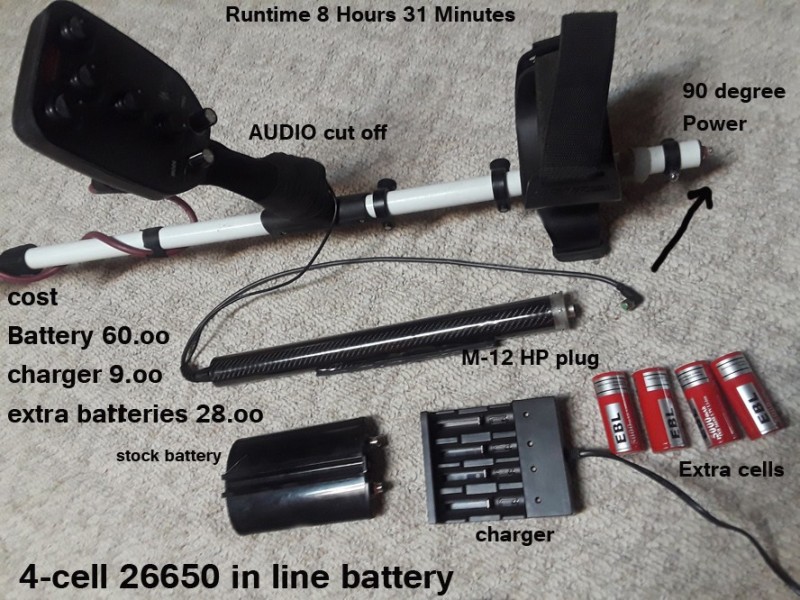
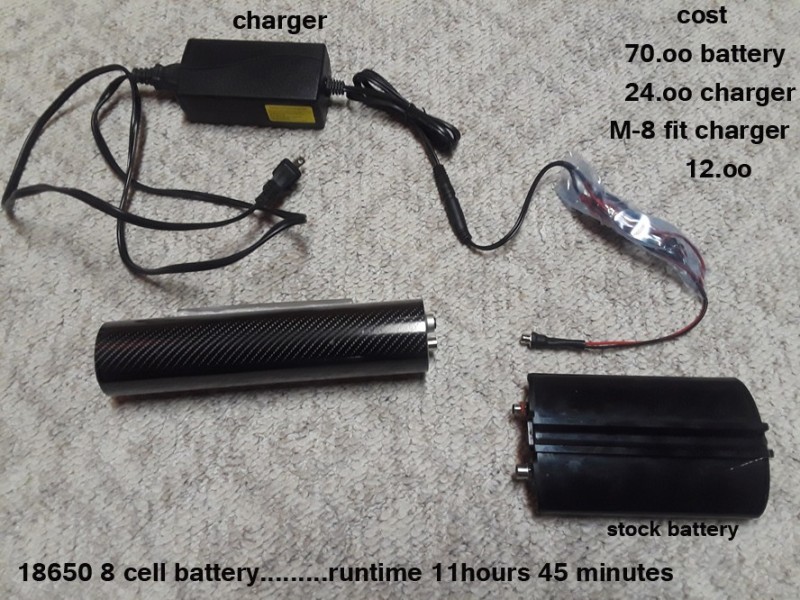









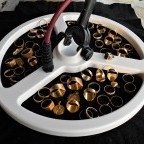



.jpg.d36fcd52325fe8a6a366d3944c8806e4.thumb.jpg.7439025c7a6d125b76c4d4495030cde4.jpg)
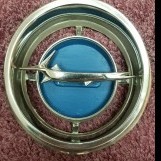
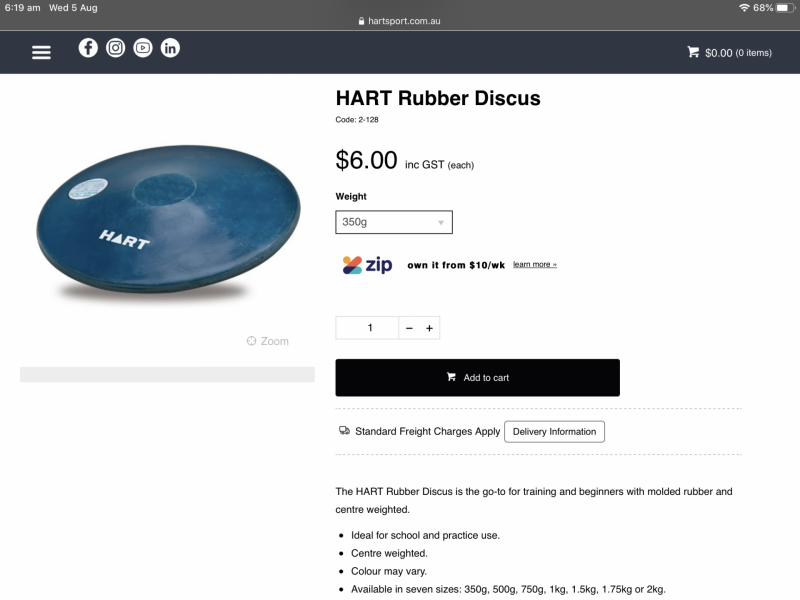


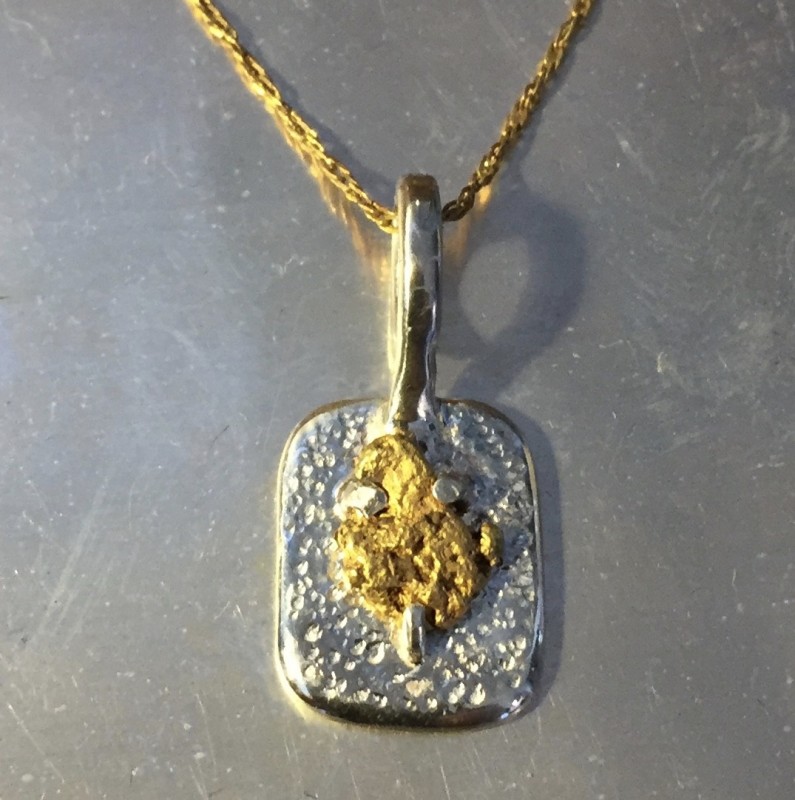
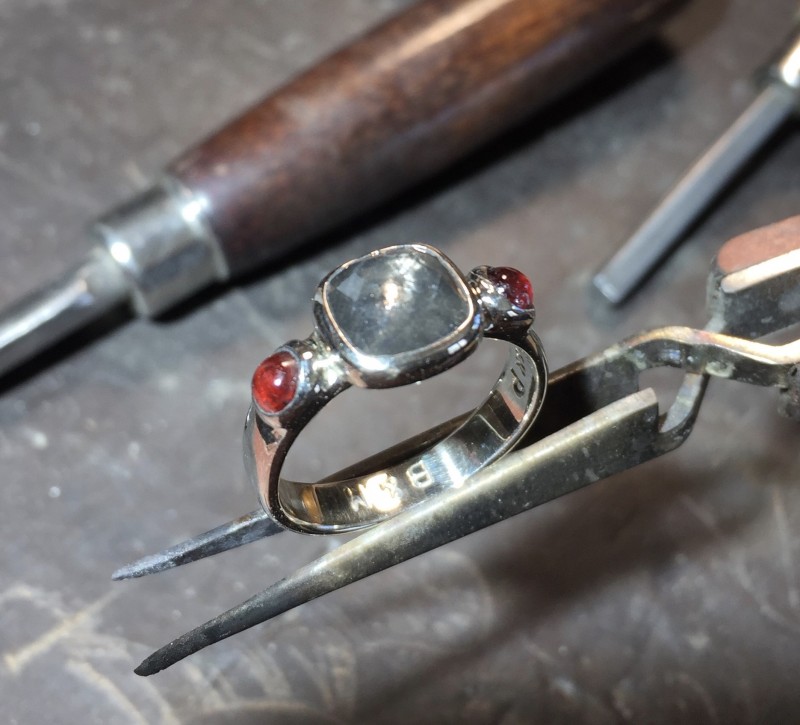
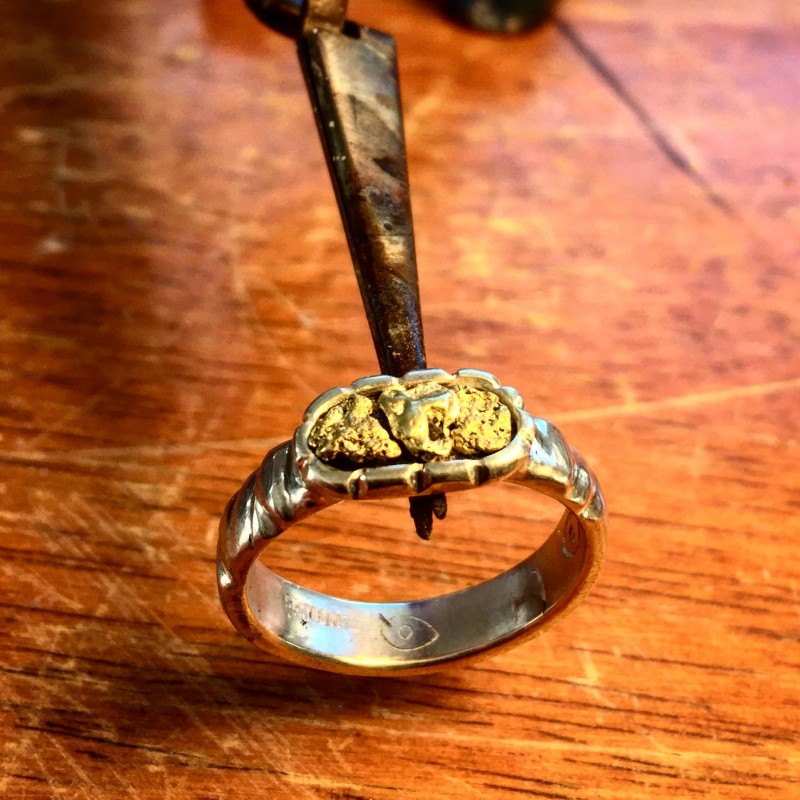
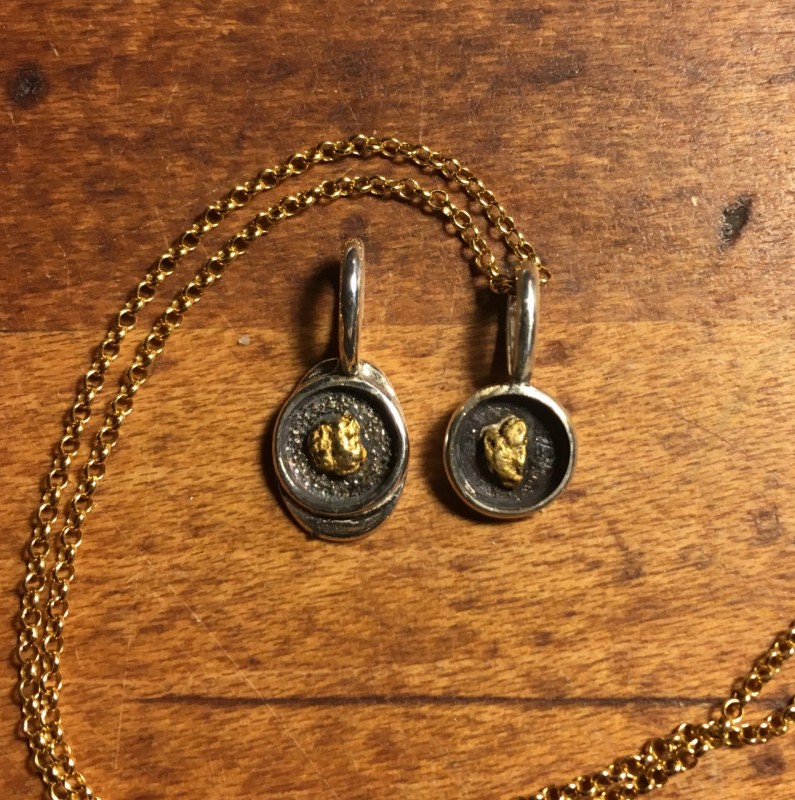
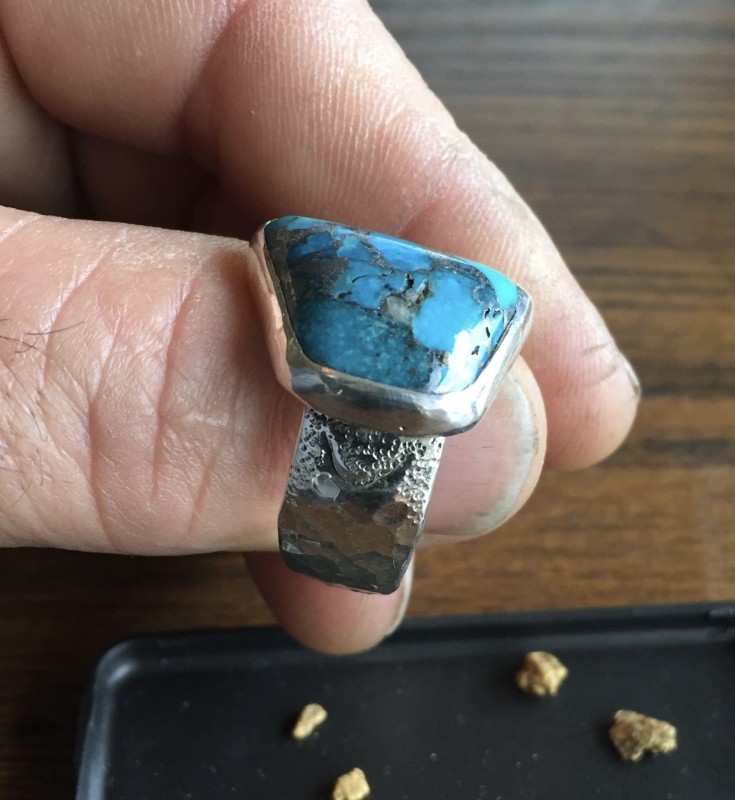

.thumb.jpg.ac5e8ee36e43bcab745dbc623fcf1874.jpg)

.thumb.jpg.4bb4c6c4da978cb5eac96e6390d8f36c.jpg)
